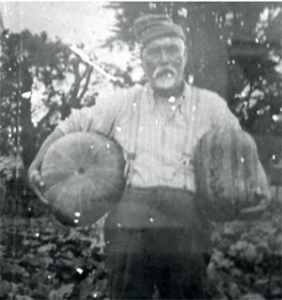Rangitumau te maunga
Ruamahanga te awa
Takitimu te waka
Ngāti Kahungunu te iwi
Hurunui-ō-rangi te marae
Nō te Wairarapa ahau
Rosalie Reiri was previously a facilitator who worked in both English and Māori medium schools in Aotearoa. In this blog Rosalie talks about the personal significance of Matariki and provides some key messages for teachers.
My Matariki awakening
My understanding of Matariki comes from my own personal experience, which has been a bit of an awakening. I first became aware of Matariki nine years ago in 2008 when I was completing my postgraduate studies. I wondered where this “new trend” had come from as I had never heard of it before. Why didn’t I know about Matariki through kohanga, kura, or from my teacher training? Matariki didn’t mean anything to me because, in my whānau, we had never celebrated it.
My curiosity led me to wonder whether the Tohunga Suppression Act (1907) or the influence of Christianity had been the reason why Matariki was not well known. If this was the case, then what other Māori spiritual "taonga" had been suppressed or lost as a result? I discovered a personal connection for my whānau, as one of my ancestors was a tohunga. My next question was: Why was the knowledge of my ancestor Whatahoro, who had an abundance of Māori knowledge, never passed down? I realised that my lack of knowledge was due to the impact of colonisation. This ignited the fire for me to strengthen te reo Māori as no one in my whānau had spoken te reo for at least three generations. I believe learning the language has been the window towards reclaiming my own identity.
Understanding the deeper meaning of Matariki
Today Matariki is widely celebrated in Aotearoa, which is really nice to see. What is often missing is the deeper meaning that sits behind Matariki. I am not an expert by any means as I am still learning. However, what I do know now is that Matariki means so much more than just a cause for celebration and kai.
This whakatauki has brought about new meaning and a depth of understanding:
"Matariki whanaunga kore, Matariki tohu mate."
"Matariki the kinless, Matariki a sign of death."
Nine stars
Last year I was privileged to hear a presentation by Dr Rangi Mātāmua who shared knowledge and new learning for me about nine stars – Te Huihui o Matariki. I loved hearing about the two new stars Pohutukawa and Hiwaiterangi, as I was familiar with the names of the other stars, but I didn’t really know their roles. All my preconceived ideas about Matariki were cast aside in less than an hour. The ideas I held in my mind had definitely burst their bubble, just like a balloon deflating fast into a shrivelled bit of nothing.
Male and female stars
First of all, I learnt that the stars were not all females. They weren’t sisters as there were males and there were more than seven of them. The biggest myth that was busted for me was the idea that Matariki was known as "Little eyes". I learnt this was not the case at all, that it was one person’s interpretation. I can see how that mistake came about. "Mata" is another word for eyes and "riki" means small.
The other positive message is the harmonious balance of male and female energies between the stars. Tupu-ā-nuku is a female energy and Tupu-a-rangi is a male energy.
The role of the stars
Rangi shared that each star has a name, a role, and a purpose in our taiao (environment). For example, Tupu-ā-nuku refers to "tupu" as in grow and "nuku" as in Papatūānuku (mother Earth) which relates to growing crops in the ground. Tupu-ā-rangi refers to things that grow in the sky, for example birds and fruits that grow in trees.
Te waka o Rangi
The story that really caught my attention was how the nine stars create the shape of a canoe in the night sky, known as "Te waka o Rangi" (the canoe of Rangi). The waka trawls at the end of every day and it is Pohutukawa’s role to collect the people that have passed on. So when the period of Matariki ends, the waka will no longer be seen until it ventures to its next destination.
This information was collated by Rangi’s tupuna from information stored in old manuscripts. There is a saying from my tupuna Whatahoro, who also has many manuscripts waiting to be translated, “Kia heke iho rā i ngā tupuna, kātahi ka tika”, which translates as “If it is handed down by the ancestors, then it is true”.
This is a great reminder for me that mana (recognition) should be given to Māori to share Māori stories that are valued and acknowledged in a Māori space. Another takeaway message is the importance of testing assumptions and knowing the source of the information.
Return to top
Dates for Matariki
One needs to know when Matariki will appear. This year the Matariki period is July 17–20. This time is also known as the days of Tangaroa and the time of haukai (feast). When wahine karanga (call) throughout the year, they are calling to the dead. It is during this time of Matariki that the spirits of those who have died within the year depart from the land and go to reside in the realm of our tupuna who have gone beyond the veil. This is not only significant to understand Matariki but also to realise the importance of karanga, the role of the kaikaranga (caller), and the importance of pōwhiri (formal meeting).
Table 1.1: Matariki dates
Rangi shared the Matariki dates for the years 2016–2018.
| Year
| Setting of Matariki
| Rising of Matariki
| Matariki period
|
|---|
| 2016
| May 30
| June 28–July 1
| June 28–July 4
|
| 2017
| May 19
| July 17–20
| July 17–20
|
| 2018
| June 7
| July 6–9
| July 6–13
|
 Matariki Dates 2022-2025 (PDF, 163 KB)
Matariki Dates 2022-2025 (PDF, 163 KB)
"Matariki Dates 2022 – 2052: Matariki Advisory Committee" (21 May 2021) – the Matariki Advisory Committee provided recommendations to the government on the dates that the nation should celebrate the Matariki public holiday. You can find out about the methodology behind the date selection.
Maramataka, the Māori lunar year
I believe we cannot acknowledge the stars without acknowledging the moon, because they are interconnected. When I was at University my lecturer Fred Kana gave me a Māori maramataka (calendar) with the phases of the moon. Back then I didn’t realise the significance of the resource he had given me. After learning more about the phases of the moon it has shown me how humans are all affected by it. I have since discovered that every whānau, hapū, and iwi has this knowledge. They have their own maramataka.
Here is the maramataka from my Wairarapa tupuna Pohuhu. My cousin Ra found it online. Much of this knowledge of when to prepare, plant, and harvest crops, according to the moon, has been lost. The evidence however, sits in my marae Hurunui-ō-Rangi, showing a picture of Major Brown and his amazing garden and pumpkins. This is also a great reminder that our tupuna were not only astrologists and navigators of the stars but also amazing hunters and gardeners.
Matariki also highlights the Māori calendar year, which is based on the lunar calendar as opposed to the common calendar that we know today. For me it brings about questions of the solar system, the days of the week, and the months of the year. For example, the month of May is Haratua. Hara means "sin" or "wrong-doing", tua means "beyond". I have been told that Haratua is the month to get rid of your hara in preparation for Matariki, the new beginning. It’s like a personal reminder from nature to clear away things you don’t need physically and spiritually.
As a child I loved to learn about the solar system and the stars, and I still do. Although knowledge has been lost, it is an exciting time for whānau to reclaim, relearn, and recreate Māori culture and traditions within each whānau unit. I would love to thank Rangi and his koroua for the knowledge that has been handed down from his ancestors and for sharing it with us all. Tēnā koutou.
Nā reira ngā mihi o Matariki ki a tātou katoa!
Classroom ideas
Here are some ways that I have celebrated Matariki with students at school:
- Ask students to bring a photo of an ancestor or someone who had passed on and share stories of what we remember about them.
- We had a hangi and fed the whole school of 600. Students learned how to set a table, prepare food properly, and serve their parents.
- Here is a junior school example of a really simple activity that could be easily adapted to suit all age groups.
Key takeaways and provocations for teachers learning about Matariki
- Pōwhiri should be taken seriously within educational settings. Time should be given to understand the significance of pōwhiri. Pōwhiri should not be rushed.
- Be mindful of the kaikaranga. Is it appropriate for young girls to karanga?
- Be clear with protocols and Māori practices within your setting.
- Make connections with local iwi and kaumātua as they may have local iwi/hapū Matariki stories.
- Be mindful of the resources you are using. Do the resources coincide with what Māori say about Matariki?
- Provocation: Is it appropriate for Pākehā to teach Māori concepts like Matariki?
- Matariki is more than just a celebration and kai, it is also about acknowledging those who have passed away within the year.
- Matariki is also about preparing for the year ahead: preparing the soil for planting; planning your personal goals, keeping in mind your aspirations.
- A challenge to Māori is to research your own hapū and see if you can find your own whānau maramataka.


